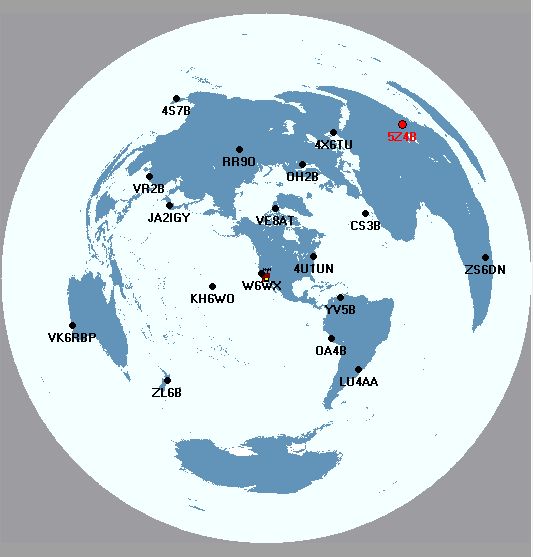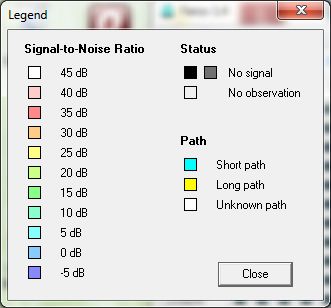W6SI NCDXF/IARU Beacon Monitor Home Page
The NCDXF, in cooperation with the IARU, constructed and operates a worldwide network of high-frequency radio beacons on 14.100, 18.110, 21.150, 24.930, and 28.200 megaHertz. These beacons help both amateur and commercial high-frequency radio users assess the current condition of the ionosphere. The entire system is designed, built and operated by volunteers at no cost except for the actual price of hardware components, shipping costs, and so on.
What I have here is the accumulation of beacon reception record for more than past 2 1/2 years, as observed at my base station location in Mission Viejo, CA. The data collection is still going on, and updated daily whenever possible.
It is intended to be checked and studied by any hams interested in DX communications in Southern California area.
The charts are organized in Year, Month, Day basis. Use Navigation bar below to access
them.

Beacon Frequncies:
14.100 MHz
18.110 MHz
21.150 MHz
24.930 MHz
28.200 MHz
Whatever you do, Do Not Transmit on these Frequencies, PLEASE!
If you would like to monitor beacons yourself, go check the available software at NCDXF International Beacon site, "Tools for Listners" page.
You will need a good receiver with PC control (
ideally, supported by OmniRig).
The image on the right shows how each chart looks like and what they represent.
FAROS is capable of showing relative signal strength (S/N ratio) and path (short / long paths). Only S/N ratio is published, as most folks in Mission Viejo do not command beam antennas on a tower, it doesn't really matter if it's short or long path in a practical sense.
Received beacon on a given band, given time are shown in blue, green, to yellow (I never saw red or white) dots.
Gray dots are "No signal". A dark gray means "the receiver is present, but no beacon is recognized", while light gray means "Nothing is working and I didn't hear anything", for any of the bad reasons (strong interferences, dead receiver, dead PC, or whatever else). Hence you can take dark gray seriously but not the ligher ones.
Where are those beacons located?
See http://www.ncdxf.org/beacon/beaconlocations.html
The monitor station (which is also my base station) consists of:
Location: So. California 33° 37' N, 117° 38' W, DM-13
RX: Elecraft KX-3
Antenna: Mission Viejo Special Mk II vertical antenna
PC: Lenovo ThinkCentre M1 i70-3770 Proc@3.4GHz
OS: Windows 7
Sound Card: Quadrature Audio output fed to HD Audio
(24-bit, 96Ksmpl/sec)
App: FAROS 1.4
Color legend for the chart:
Above is a reflection of my thought and only mine. But if you have any questions, feedback and/or suggestions, please send me an e-mail. I might reply on this page (sorry, no guarantee)